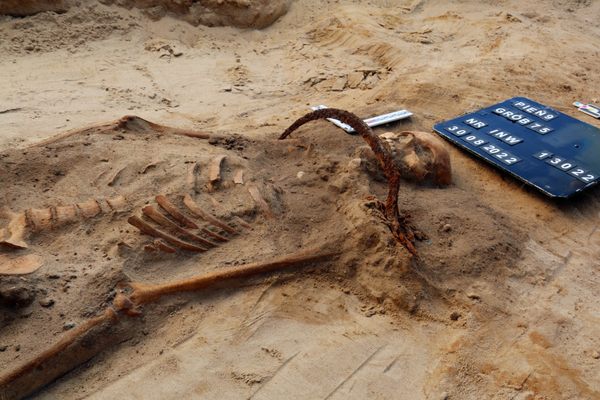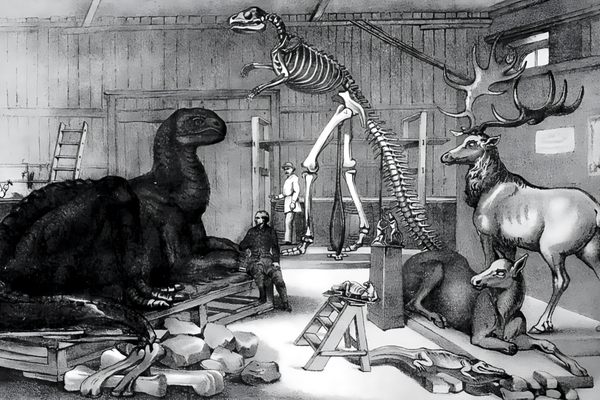Now on Display: An Ice-Age Polar Bear Skeleton Found in a Laundry Room
The startling story behind a new exhibit at a Norwegian archaeology museum.

Imagine finding $20 in your laundry. Now, imagine finding a 12,400-year-old polar bear skeleton in your laundry room. That second scenario is exactly what happened to Sverre and Reidun Asheim, a couple from the Norwegian island of Finnøy.
The polar bear skeleton, nicknamed Finn, is on main display in a new exhibit at the Museum of Archaeology in Stavanger, Norway, decades after it was discovered.
In 1976, builders laid sewage pipes for a new house that would later become the Asheims’ home. During the excavation process, the builders uncovered mysterious bones in the ground and placed them in a box—never to be opened.
Six years later, geologist Hanne Thomsen came across the box at the Museum of Archaeology. She consulted her fellow co-workers at the museum about the contents and through further analysis, found the remnants were bones from an ancient polar bear.
Thomsen traced the box’s origin to the Asheims’ house and contacted the couple. According to the University of Stavanger, the couple told her there were more bones, and if Thomsen wanted, she could exhume them.

In 1982, Thomsen assembled a crew of archaeologists and zoologists from the museum to dig into the Asheims’ laundry room floor. It took a bit of digging “through 70 cm of sand and silt,” but they found the polar bear skeleton, including a thigh bone, ribs, and stomach remains, “encased in a 15 cm layer of clay.”
The clay preserved the bones from oxygen exposure and other elements, making the skeleton a rare find. “When we found it, there were only nine other finds of polar bears from the Ice Age in the entire world.” Thomsen added, “this is still the most complete Ice Age polar bear from so far back in time.”
It’s not clear how the Finnøy polar bear died, but according to museum experts, it died well-fed. They found seal and sculpin fish remains in the bear’s stomach. What the experts do know is that the polar bear “sank to the seabed, under about 25 metres of water, and was quickly buried in clay.” The bear was 28 years old, 1,322 pounds (600 kilograms), and lived in Rogaland during the Ice Age.

When Finnøy’s land mass arose from the sea after thousands of years, the polar bear rose with it and “would have been situated at the shoreline for a brief time before the beach moved further down to its current level.” It was another thousand years or so until the Asheim family built their home on the polar bear’s burial place.
The polar bear, nicknamed Finn, was featured alongside other relics at the Stavanger Museum of Archaeology in 1985. A few pieces were missing, so the museum borrowed present-day bear bones from the University Museum in Bergen to complete the exhibit.
The assembled skeleton is 7.5 feet long (2.3 meters) and 1.9 feet wide (0.6 meters). Now, after a long residence in the museum’s cafe, the skeleton is on display in a special exhibit room. The hope is to honor Finn and show visitors the bear’s “parallels to present-day polar bears, which are classified as a vulnerable species.”













Follow us on Twitter to get the latest on the world's hidden wonders.
Like us on Facebook to get the latest on the world's hidden wonders.
Follow us on Twitter Like us on Facebook